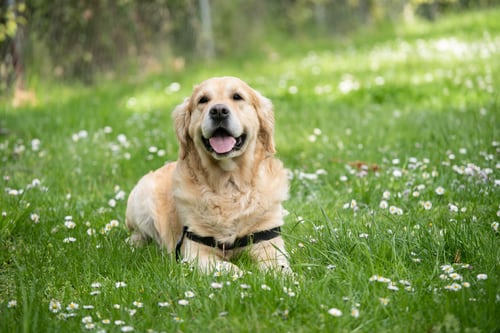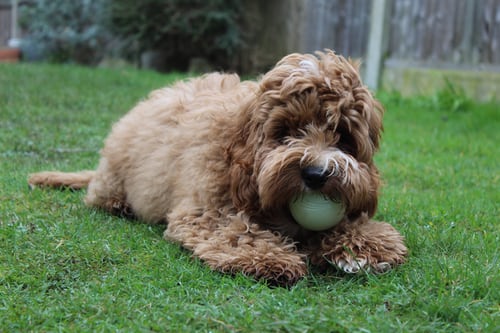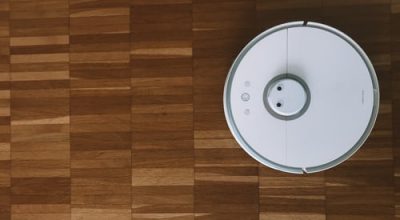What do people mean by hair versus fur on dogs? They usually refer to the difference between a single coat and a double coat. A single layer of coat is sometimes referred to as a ‘hair’ coat. It may grow long or remain short, cascade in waves or form bouncy curls, feel smooth or rough to the touch, but the hair all over the dog is the same. Do you know how to tell if a dog has a double coat? Other dogs have a double coat: an outer layer of thicker guard hair and a different undercoat of thin, light hair. The undercoat is like the down on some birds that grow under larger, thicker, more weatherproof feathers.

How To Tell If A Dog Has A Double Coat: Double And Single-coated Dogs
When a dog has a double coat, it means that the undercoat is typically shorter than the outer coat, and the hair has a dense, wool-like texture. And as the name suggests, single-coated dogs have only one coat, without this undercoat. Dogs of any length and texture of coat may have single or double coats.
Many long-haired dogs have double coats, including the Bernese Mountain Dog and all Collie varieties. You won’t be surprised to learn that double-coated dog breeds usually leave more fur around the household. Most double-coated breeds ‘blow’ their undercoats twice a year, which means that they shed their entire undercoat in response to seasonal changes. Double coated dogs also require extra time and attention during grooming so that the dense undercoat is completely brushed and does not develop mats.
The fur on single-coated dogs can be of any length, from the short, single coat of the Whippet to the Afghan Hound’s long silky single coat. No matter the length of their fur, the single coated breeds often have to wear a dog jacket in winter because they don’t have the added insulation offered by the undercoat. Single-coated dogs usually leave less fur on your clothes and furniture, making it easier for allergy sufferers. But a single coat does not make a dog hypoallergenic, and some double-coated breeds, such as the Airedale Terrier, are considered hypoallergenic.
How To Tell If A Dog Has A Double Coat: What’s The Coat Blow In Double Coated Dogs?

If you own a double-coat dog, there are more differences than just the appearance. These coats, too, behave differently. To explain, the double-coated dog breeds also go through what is known as the coat blow. It’s important to know exactly what the coat blow is because this is something else you should be aware of if you’re thinking about bringing one of these canines into your family.
Coat blow is different from the regular shedding that occurs with dogs throughout the year. When a dog blows his coat, it’s basically because he’s going from his winter coat to his summer coat. The process is similar to shredding but different enough to be explored in detail.
A double-coated breed (such as Malamute or Siberian Husky, to name just a few examples) will have a soft undercoat, which will lie beneath the topcoat of coarse guard hair noticeably longer. Thanks to this soft undercoat, your dog can stay warm and warm even in the coldest winter months. But as you’ve probably guessed, there’s something to change when the weather warms up so that he can keep feeling comfortable under all his fur. This is where the blowing of the coat comes in. It’s a process that releases the undercoat in large clumps. If you thought shedding was bad, you’re going to rethink your stance when you see what the coat blow looks like! Some dog owners are packing all the garbage bags with all the hair that comes out. This isn’t a pretty sight.
How To Tell If A Dog Has A Double Coat: More Information
Do you need to rush to the groomer when your double-coated dog blows his coat? No no. Surprisingly, you’re not actually. All the unwanted hair is going to end up falling out on its own. Now how severe and how frequent the blow of your dog’s coat may be will depend entirely on the breed of your dog as well as the gender of your pet. There are several unexpected factors involved in the blow of the coat.
Even though you don’t need to take your dog to a groomer to take care of their coat blow, you can at least help at home. Just take a couple of minutes each day to brush your dog. Fifteen minutes is a good place to start, and it will become clear if you need to stick to it for longer.
You will also need specific tools to help with the process, such as a slicker brush, a Grayhound comb, and an undercoat rake. These tools are all going to come in handy. Removing the undercoat, which is already loose, with these grooming tools can help you get your hair out before it ends up all over the house. On top of all that, your dog will probably feel better as well. As the coat blow progresses, your dog may even have patchy areas all over his fur, so helping him out with a little at-home grooming will help keep him looking his best.

Last Tips
Besides brushing your dog (and then brushing some more, obviously!) during the coat blow season, it’s also a good idea to bathe your dog a little more often than you would normally do. This will also help speed up the process. This is because the bathing will help to loosen the undercoat of your dog further. It’s best to stick with a canine-appropriate shampoo that contains natural ingredients and does not irritate your dog’s skin (especially because you will be bathing him more frequently, which inevitably causes a little irritation).
You can even use a dog-made coat conditioner to add moisture to any mats or tangles that have developed. Then you can remove the mattress more easily with a matt breaker grooming tool. Dealing with a coat blow is certainly a bit of an aggravating process, but at the end of the day, it will make such a difference to your dog and the cleanliness of your home that it will be worth it.
How To Tell If A Dog Has A Double Coat: Double Coat Dos And Don’ts
Many dog breeds have a double coat, but even the most well-studied dog owners may not know how to properly take care of it. A double coat of a dog consists of a soft undercoat and a long, thick outer coat, each of which has different functions to protect the dog from the elements. With this in mind, there are two, and there’s no double-coat care that every dog owner should know about.
Research to better understand the double coat of your dog.
Double coats are quite common among herd breeds, retrievers, and terriers, but other breeds may have them as well. Double coats are designed to protect your precious pup from both heat and cold. The undercoat keeps your dog warm during the winter months and keeps the cool air close to the skin during the summer months.
The outer coat is designed to resist elements such as snow and UV rays. By better understanding what the outer and undercoats are supposed to do, you can be better prepared for double-coat maintenance when the temperature starts to change.

1. Don’t Go Against Professional Advice.
If you have a dog with an exceptionally thick coat, you might think that shaving all that fur during the summer months is the right thing to do. After all, how else is your dog supposed to stay cool? It makes perfect sense to shave your dog when it’s hot outside, doesn’t it? It’s not. Double coats are not like jackets; you’re not supposed to remove them when it’s hot. It could not only ruin the coat when it grows back in, but it could also make your dog uncomfortable!
As mentioned in the previous section, the undercoat of a dog acts as a kind of insulation to regulate body temperature. Tampering with it by shaving it all off will make your dog feel hotter than when he was wearing his coat. Plus, shaving your dog’s double coat puts him at a higher risk of sunburn or heat stroke.
That’s why vets, groomers, and breeders agree that shaving a double coat is rarely a good idea. Your dog will be more comfortable and prepared for the weather, leaving his fur intact. Still, there are some things you can do as the owner to keep your dog’s double coat that doesn’t require shaving.
2. Practice Regular Bathing And Brushing.
One reason you might be tempted to shave your dog is the shedding that comes with the summer heat. Shedding tends to increase when it’s hot outside, and cleaning isn’t always easy. But there are a few ways to handle your dog’s hair loss that won’t risk ruining his double coat. The first is regular bathing and shampoo. Bathing your dog on a schedule, especially during the summer months, will wash off any loose hair before it can be shed anywhere else.
The second one is brushing the double coat of your dog. Like bathing, brushing can remove any loose hair from your dog’s coat before it spills everywhere. Even special double-coat brushes are designed to remove any loose hair from both the outer and undercoat for more thorough cleaning. After you’ve bathed your dog, you can brush his coat—just make sure it’s dry first.
3. Don’t Brush Hard Double Coat Maintenance.
It’s always important to be gentle with your dog during any kind of at-home grooming, but especially when brushing. Brushing too hard isn’t going to do anything except hurt your dog’s skin. Brushing may be more challenging in the future if you’re not careful. Your dog should be cooperative and trusting during the brushing process, so be gentle.
4. Do Have Your Dog Shaved Only If It Is Under Special Circumstances.
It is not recommended to keep your dog’s double coat cool during the summer, but there are certain circumstances where it may be necessary. This may include preparation for surgery, removal of matted hair, and treatment for canine skin diseases.
Final Words
A double coat of a dog is part of its natural cooling system, and each layer helps keep the dog cool and protects its skin from sun damage. If you are worried that your dog will be too hot in the summer, consult a professional groomer about the possibility of trimming his coat, but in no case should you shave your double-coated dog. Some jobs are only intended for professionals.


